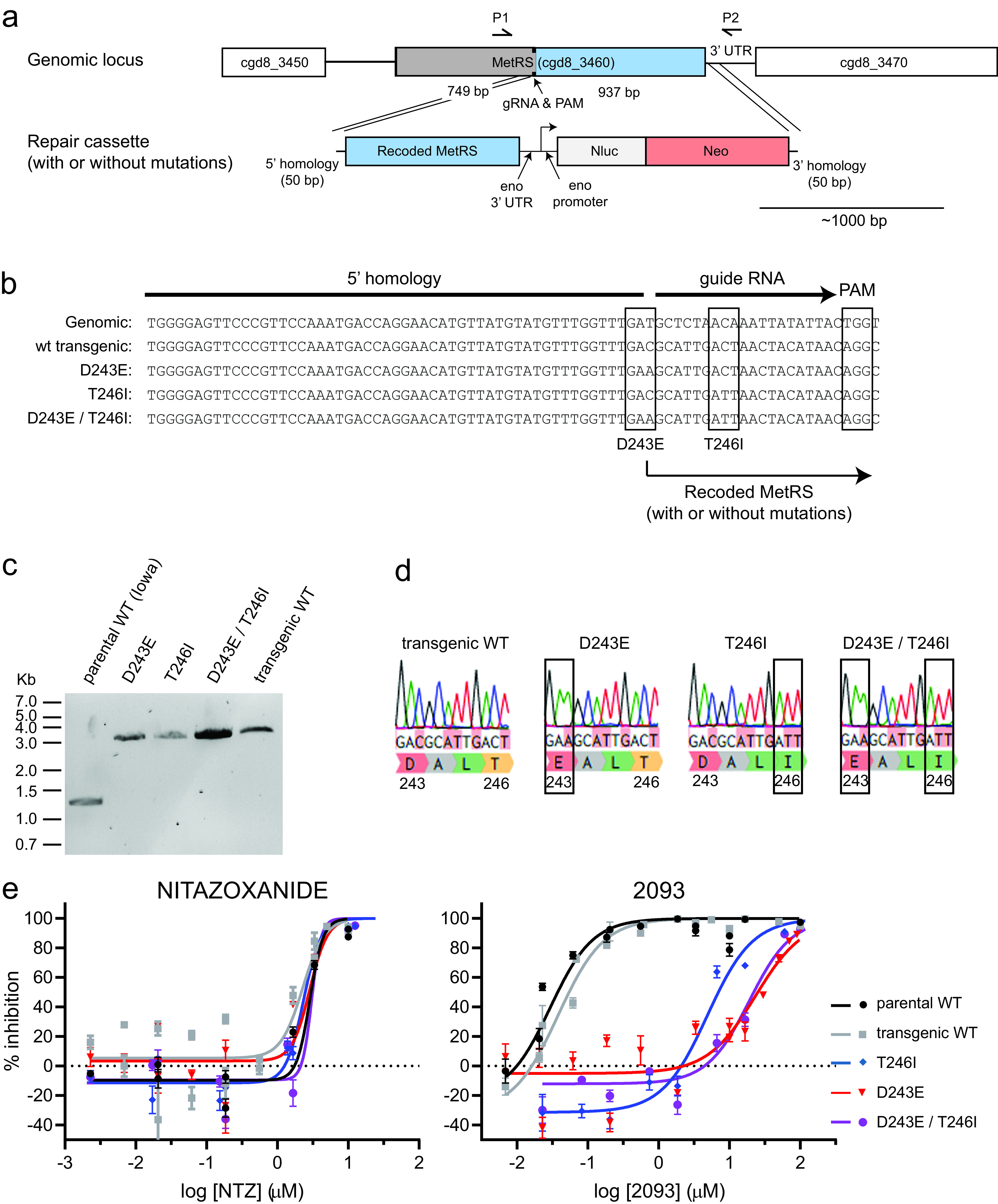FIG 2.

CRISPR/Cas9-engineered MetRS mutations confer C. parvum resistance to 2093. (a) Strategy used to modify the C. parvum MetRS genomic locus by CRISPR/Cas9 gene editing. Each DNA fragment is drawn to scale with the ∼1,000-bp scale bar shown. (b) Aligned sequences showing the wild-type locus, WT transgenic locus, and intended mutations, along with the PAM CRISPR/Cas9 cut site and guide RNA. (c) PCR confirmation of the genomic insertion using primers P1 and P2 shown in panel a. The anticipated PCR product sizes for the parental and transgenic strains were 1,211 bp and 2,945 bp, respectively. (d) Sanger sequencing chromatograms confirming introduction of each desired mutation. (e) Susceptibility of parental and transgenic C. parvum isolates to nitazoxanide (NTZ; negative control) and 2093. Data are combined from at least two biological replicate experiments per strain. Curves were calculated using all data points, but only every other dose is plotted in order to reduce clutter on the graphs.
